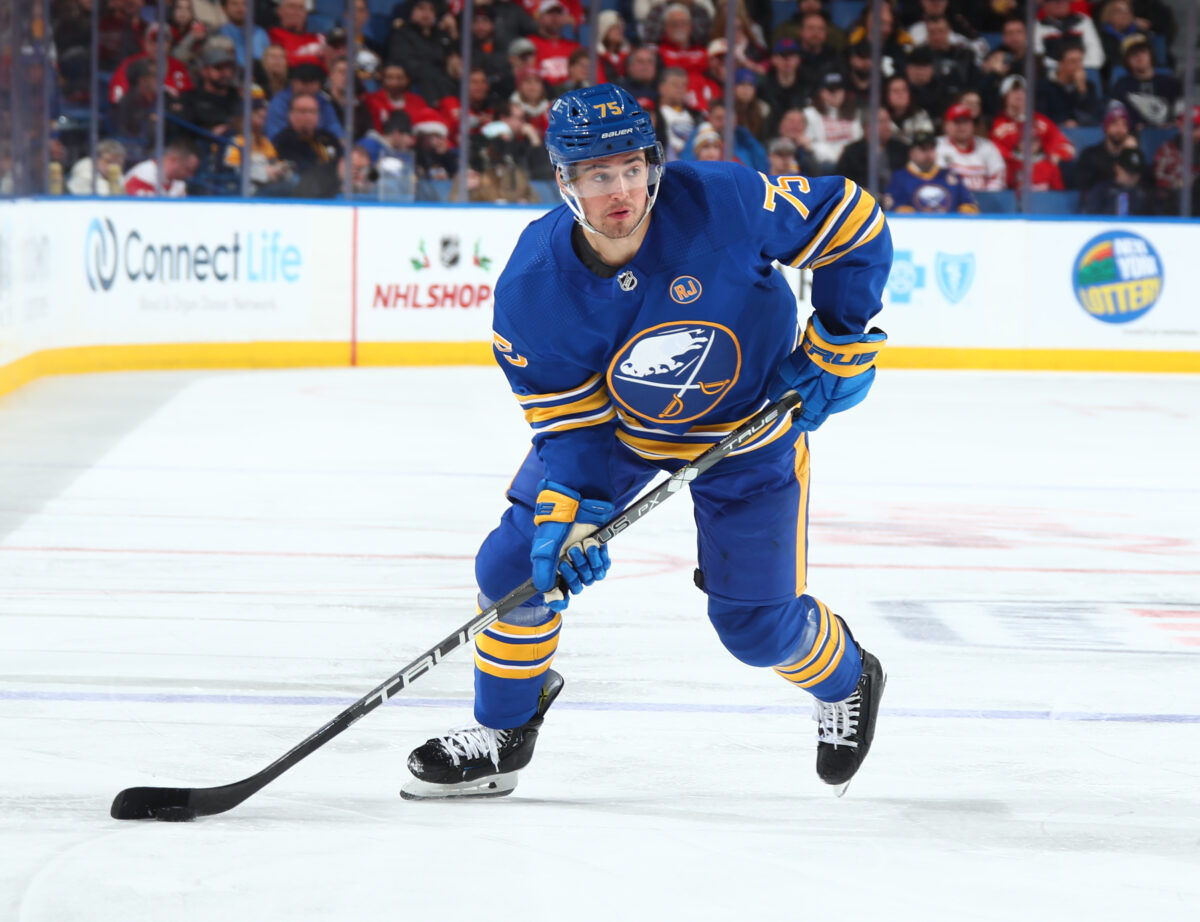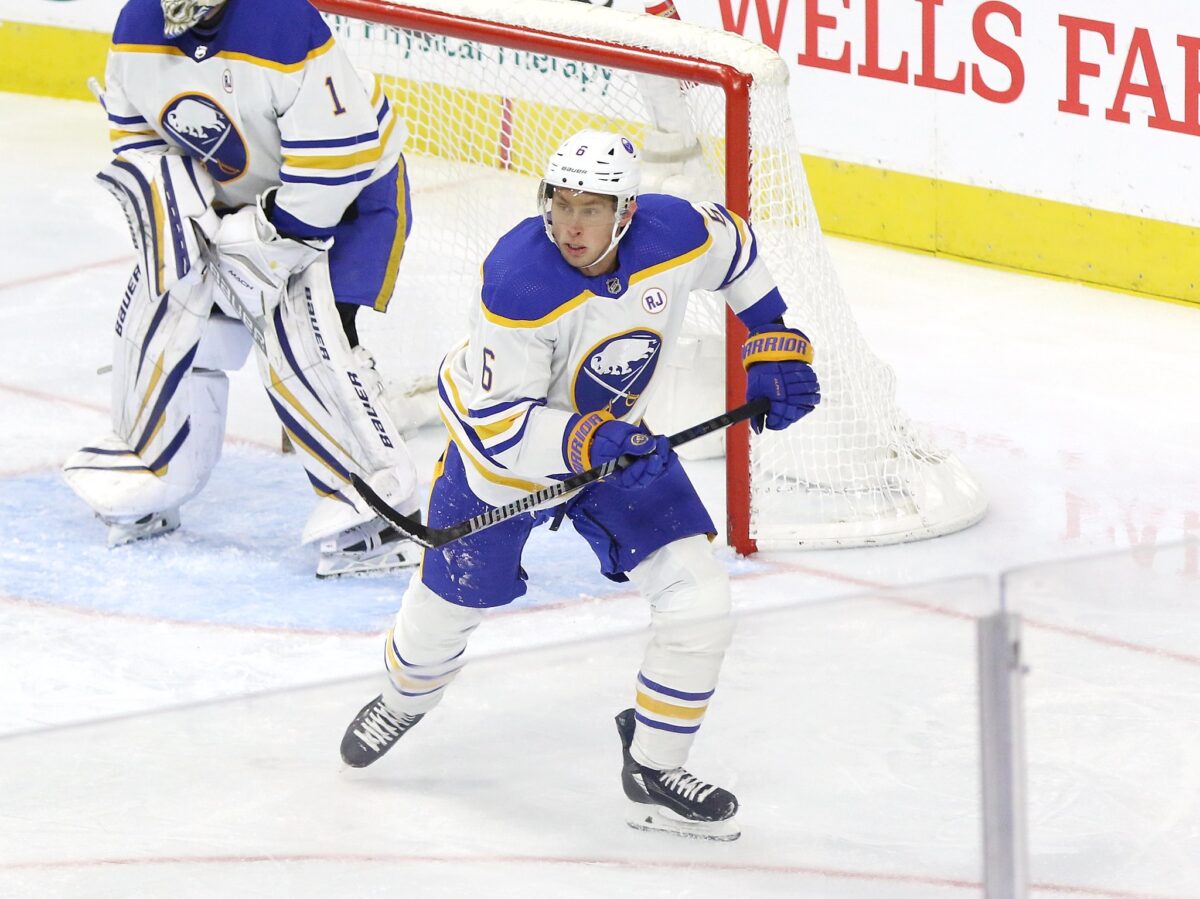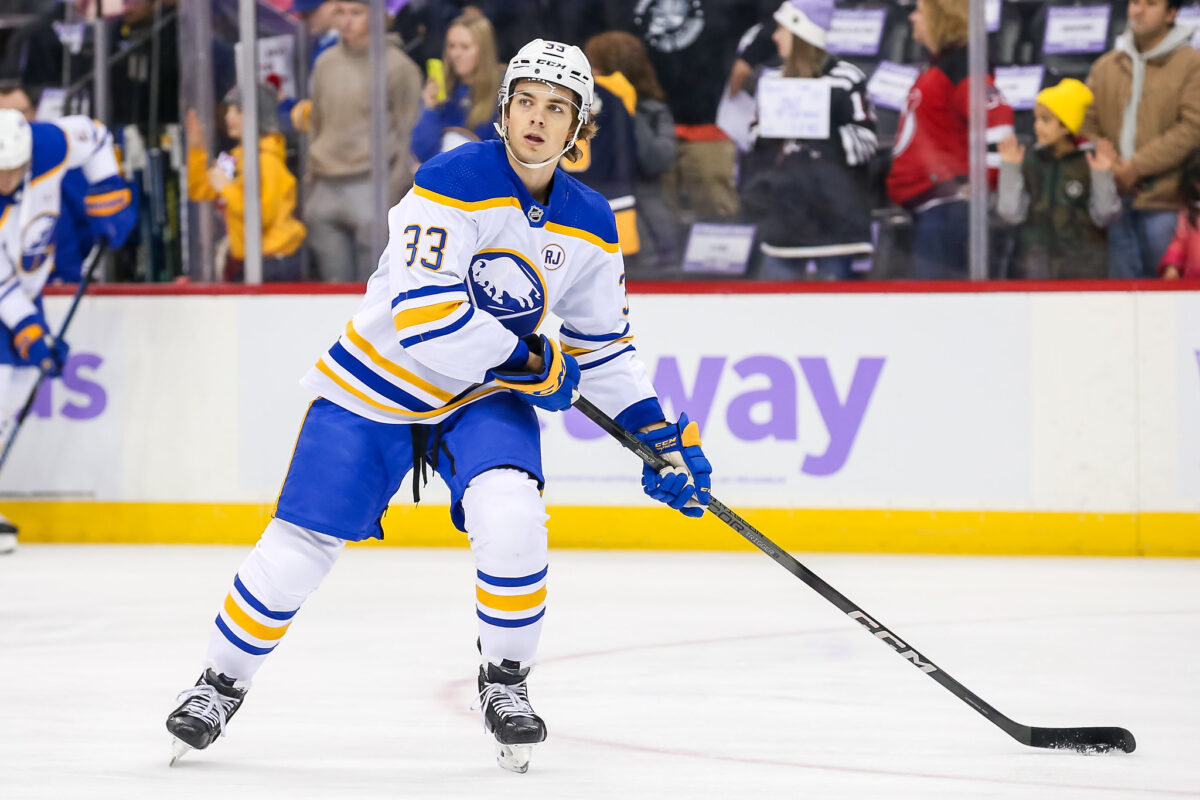General manager Kevyn Adams took a conservative approach this past offseason. He didn’t shake up the Buffalo Sabres roster in a significant way. Instead, he banked on the growth of his young team and a couple of veteran additions to the defense in Connor Clifton and Erik Johnson. Unfortunately for the Sabres, not only has their young core taken a gigantic step back from last season, but Clifton and Johnson have struggled mightily. Neither player has been able to help the Sabres tighten up defensively, nor do they appear to have an offensive bone in their bodies. Adams bet on his new third pair, and things haven’t worked out.
Connor Clifton
Last season, the Sabres had the fewest hits in the NHL; they were far too soft. Clifton was signed in the offseason to give the team a physical edge and help stabilize a group that needed a ton of help defensively. Clifton has held up his end of the bargain in the physicality department, leading the team in hits through the first 30 games. Bringing in one player was never going to turn the Sabres into a physical team; they’re still a bottom-six team in the NHL in hits, but Clifton has done his part.

Unfortunately, that’s where the compliments end for his game this season. Besides throwing his weight around, Clifton hasn’t done anything particularly well. He leads all Sabres defensemen in botched puck retrievals per 60 and has the lowest success rate. Even when he gains possession, he has had trouble moving the puck. His success rate on exit attempts is also ranked last among Sabres D-men.
Clifton’s inability to win loose pucks and move them out of the zone has resulted in the Sabres getting hemmed in their end far more often when he is on the ice. In part due to the lack of puck possession, they concede shots and goals at a higher rate with Clifton on the ice than any other defenseman on the team.
Related: Sabres’ Defense Needs to be Smarter With its Aggressiveness
On the penalty kill, it’s the same story. Per 60 minutes, Clifton has the most high-danger chances against and most expected goals against on the team (minimum 20 minutes of ice-time on the penalty kill). Clifton’s game is a mess right now, whether on special teams or 5v5. His confidence level is a far cry from where it was last season when he was a Boston Bruin.
Erik Johnson
The Sabres signed Johnson to a one-year deal in the offseason worth $3.25 million to play a third-pair role. The former first-overall pick has had a long career as a reliable defensive player, but at 35 years old, he has started to slow down.
Johnson still has yet to record his first assist in a Sabres uniform, and he’s mustered just one assist in his last 61 regular season games. Offense has never been his strength, but even just a couple of years ago, he used to be reliable for a minimum of around 20 points per season when healthy. This season, he’d be lucky to get 10. Once a solid shutdown defenseman, he has also enjoyed little success in his own zone with the Sabres. He leads Sabres defensemen in high-danger chances against and hasn’t fared much better than Clifton.

The other Johnson, Ryan, is quickly surpassing Erik on the Sabres’ back end. Erik has played the most sheltered minutes on the team, with just 26 percent of his ice time against elite competition, yet Ryan Johnson has out-performed him all season. Ryan has settled into the third-pair shutdown role and provided the Sabres with reliable results. Erik might not be a regular in the lineup if this trend continues.
What is the Solution to the Sabres’ Third Pair Issue?
Adams wanted to address the third pair and give the Sabres a deeper defense core. It hasn’t worked out so far with Clifton and Erik Johnson, but there is still a way to turn things around. Erik Johnson is only under contract until the end of this season, so if he fails to elevate his game, there are no long-term ramifications. Conversely, Clifton is locked in for $3.33 million per season until 2025-26. If they can’t find a role for him, he will become an expensive problem. They need to prioritize putting him in a situation to succeed.

In just over 34 minutes together this season, Clifton and Ryan Johnson have an expected goal share of 53.78%, and they’ve outscored opponents 1-0. The sample size may be small, but he has better results with Ryan Johnson than with any other defense partner. The duo works well as a third pair since both players are more comfortable playing low-quality competition, and there appears to be some chemistry. If I were head coach Don Granato, I would be scratching Erik Johnson and giving Ryan a long look next to Clifton.
